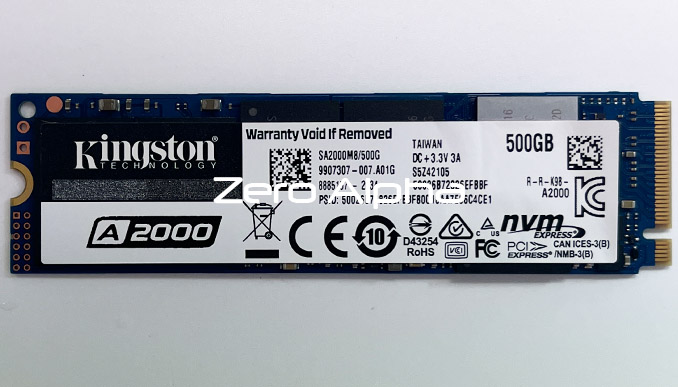Kingston A2000 SSD Data Recovery
The Kingston A2000 SSD has become a popular choice for users seeking high-speed and reliable storage solutions. However, even with its advanced features, the Kingston A2000 is not immune to data loss problems. In this article, we will explore common issues associated with the Kingston A2000 SSD and discuss potential challenges users may face in the data recovery process.

- Firmware Fluctuations:
Firmware plays a crucial role in the functionality of an SSD, acting as a bridge between the hardware and software components. Users may encounter data loss issues if the firmware becomes corrupted or experiences fluctuations. Firmware updates are released periodically to address vulnerabilities, but improper updates or interruptions during the process can lead to complications.
Solution: Regularly check for official firmware updates from Kingston's website and follow recommended procedures for installation. If a firmware update causes issues or if the SSD fails during the process, professional assistance may be necessary for recovery.
- File System Corruption:
File system corruption is a common culprit for data loss on SSDs, including the Kingston A2000. This can occur due to sudden power outages, improper shutdowns, or malware attacks. When the file system becomes corrupted, users may find themselves unable to access crucial data.
Solution: Use built-in tools like Windows Check Disk (chkdsk) to scan and repair file system errors. In more severe cases, third-party data recovery software or professional services may be required to retrieve lost files.
- Physical Damage:
Physical damage is a significant threat to any storage device, and the Kingston A2000 SSD is no exception. Accidental drops, shocks, or exposure to extreme temperatures can lead to physical trauma, rendering the SSD inaccessible and resulting in potential data loss.
Solution: In cases of physical damage, it is crucial to seek professional data recovery services. Attempting to repair or recover data from a physically damaged SSD without expertise may worsen the situation.
- Bad Blocks and Wear-Leveling:
Over time, SSDs may develop bad blocks as the NAND flash memory cells wear out. Kingston A2000 users may experience data loss when the SSD exhausts its spare blocks for wear leveling.
Solution: Regularly back up data to minimize the impact of bad blocks. Employ specialized data recovery tools designed for SSDs when data loss occurs. In more complex cases, professional assistance may be necessary for a thorough recovery process.
Conclusion:
While the Kingston A2000 SSD offers impressive performance, users must be aware of potential challenges leading to data loss. Vigilance in firmware updates, preventive measures, and careful handling can mitigate risks. In the unfortunate event of data loss, users should approach recovery cautiously, considering the specific nature of the problem and seeking professional assistance when needed.
Kingston A2000 500GB SSD Data Recovery SA2000M8J500G
28Feb24: This ssd has stopped working inside the laptop.